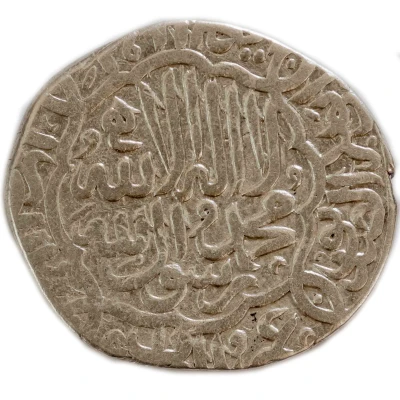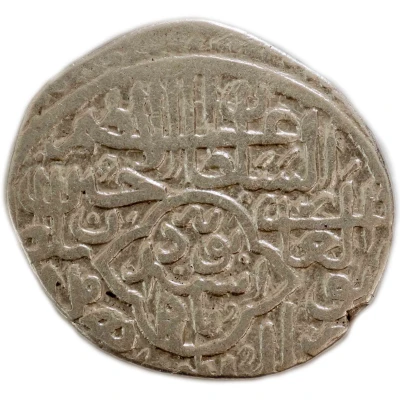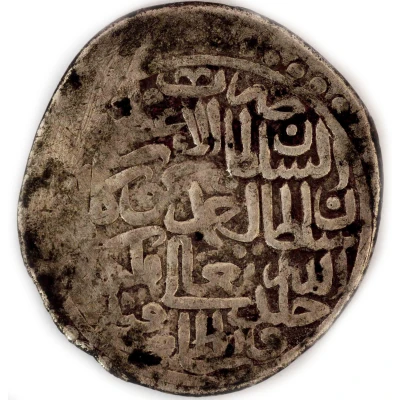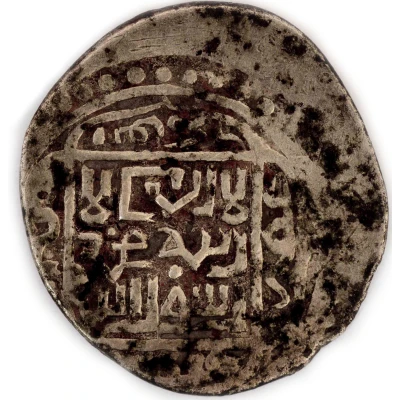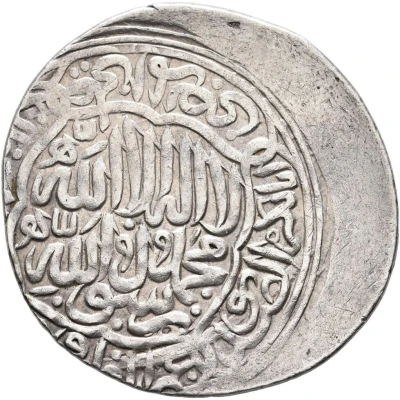
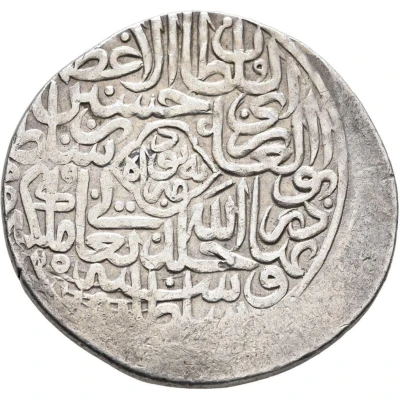

Tanka - Sultan Husayn Abu’l-Ghazi - 3rd reign - Post-Reform Type Herat
| Silver | 4.78 g | - |
| Issuer | Timurid Empire (Mongol States) |
|---|---|
| Type | Standard circulation coin |
| Years | 895-906 (1490-1506) |
| Calendar | Islamic (Hijri) |
| Value | 1 Tanka |
| Currency | Tanka (1370-1507) |
| Composition | Silver |
| Weight | 4.78 g |
| Shape | Round (irregular) |
| Technique | Hammered |
| Orientation | Variable alignment ↺ |
| Demonetized | Yes |
| Updated | 2024-10-06 |
| Numista | N#311186 |
|---|---|
| Rarity index | 93% |
Reverse
Script: Arabic
Lettering:
السلطان الأعظم أبو الغازي حسين السلطان بهادر خلادة الله تعالى ملكه وسلطانه
به بود هرات
Translation:
'al-sulṭān al-aʿẓam Abuʾl-ghāzī Ḥusayn sulṭān bahādur khallada Allāh taʿālā mulkahū wa sulṭānahū
beh būd-e Harāt
The supreme sultan Abuʾl-Ghazi Husayn Sultan Bahadur. May Allah, the Exalted, perpetuate his kingdom and sovereignty
Prosperity of Herat
Comment
"2432.3 AR tanka (4.78g), normal post-reform type (reverse T3, as described under type #2405), mint name with beh bud in eye-shape cartouche, Sunni reverse, struck 895 and later
Herat & Astarabad are by far the most common mints, but Balkh, Marw, Mashhad, Sabzawar, and Tun are often obtainable. About 20 mints in all are known. Virtually all specimens show some weakness of strike."
'Beh būd' ('Prosperity' in Persian) was the epithet for the currency of Sultan Husayn.
This type has been frequently published on Zeno.
Interesting fact
One interesting fact about this coin is that it was minted during the reign of Sultan Husayn Abu'l-Ghazi, who was the grandson of Timur, also known as Tamerlane, the famous Mongol emperor. The coin features an inscription in Persian that reads "Sultan Husayn Abu'l-Ghazi, the just king, the son of the great Timur" on one side, and an image of a lion on the other. This coin is a rare example of the currency used during the Timurid Empire, which was a powerful and influential empire that spanned across Central Asia, the Middle East, and parts of South Asia during the 14th to 15th centuries.
